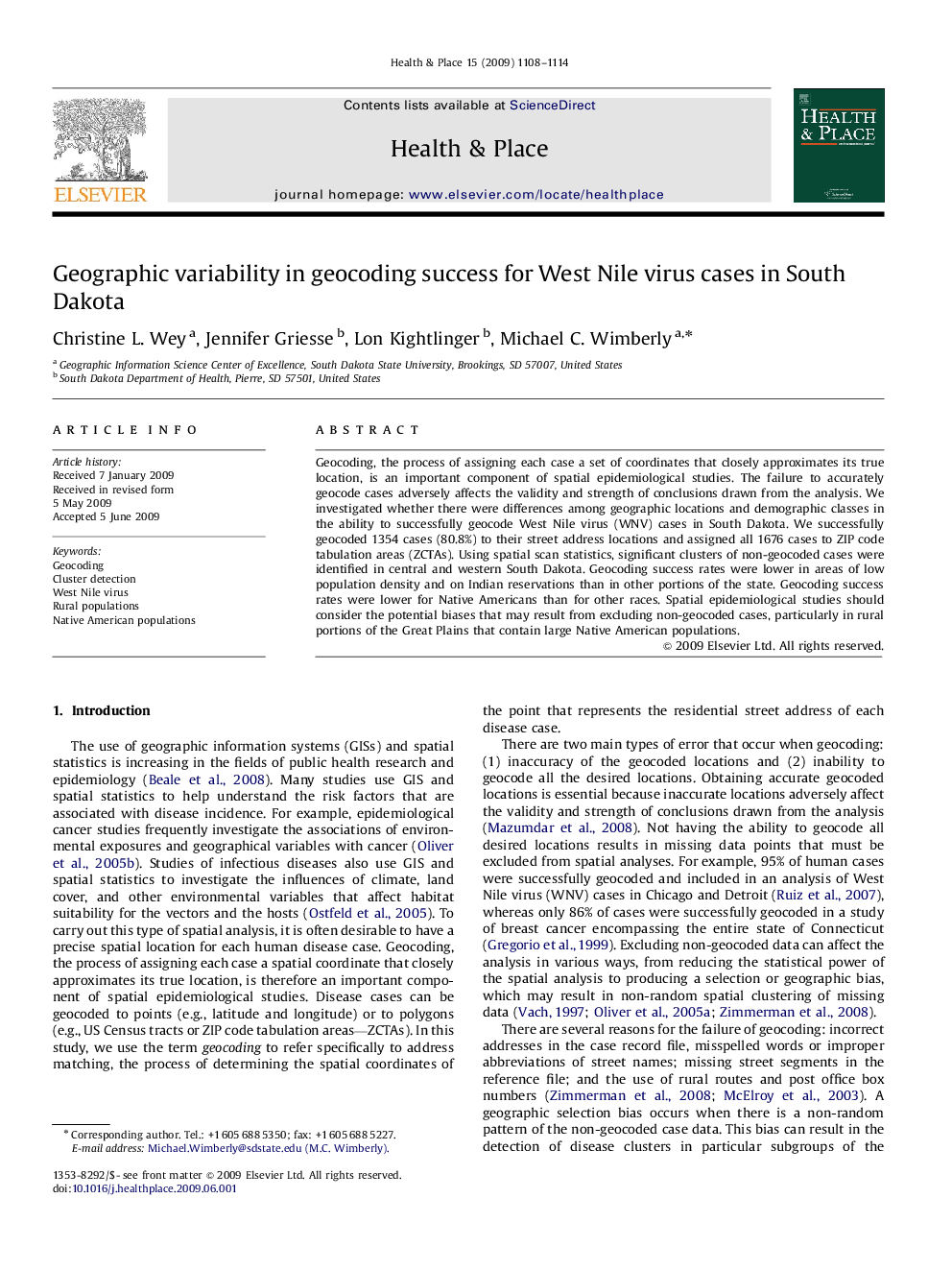| Article ID | Journal | Published Year | Pages | File Type |
|---|---|---|---|---|
| 1048739 | Health & Place | 2009 | 7 Pages |
Geocoding, the process of assigning each case a set of coordinates that closely approximates its true location, is an important component of spatial epidemiological studies. The failure to accurately geocode cases adversely affects the validity and strength of conclusions drawn from the analysis. We investigated whether there were differences among geographic locations and demographic classes in the ability to successfully geocode West Nile virus (WNV) cases in South Dakota. We successfully geocoded 1354 cases (80.8%) to their street address locations and assigned all 1676 cases to ZIP code tabulation areas (ZCTAs). Using spatial scan statistics, significant clusters of non-geocoded cases were identified in central and western South Dakota. Geocoding success rates were lower in areas of low population density and on Indian reservations than in other portions of the state. Geocoding success rates were lower for Native Americans than for other races. Spatial epidemiological studies should consider the potential biases that may result from excluding non-geocoded cases, particularly in rural portions of the Great Plains that contain large Native American populations.
